A solar charge controller/ regulator is a battery charger that sits between the solar panel and the battery in the solar energy system circuit. Its purpose is to control the battery charging process and ensure the battery does not get overcharged. There are two primary solar charge controllers; PWM and MPPT. The latter delivers better charging efficiency and enhanced performance, so you should consider it for your solar energy system. In this article, we will explain how the MPPT charge controller is better and list the best MPPT charge controller in the market. Take a look!
What is an MPPT Charge Controller
An MPPT (Maximum Power Point Tracker) charge controller is an efficient electronic DC-DC converter that maximizes the power output from solar panels.
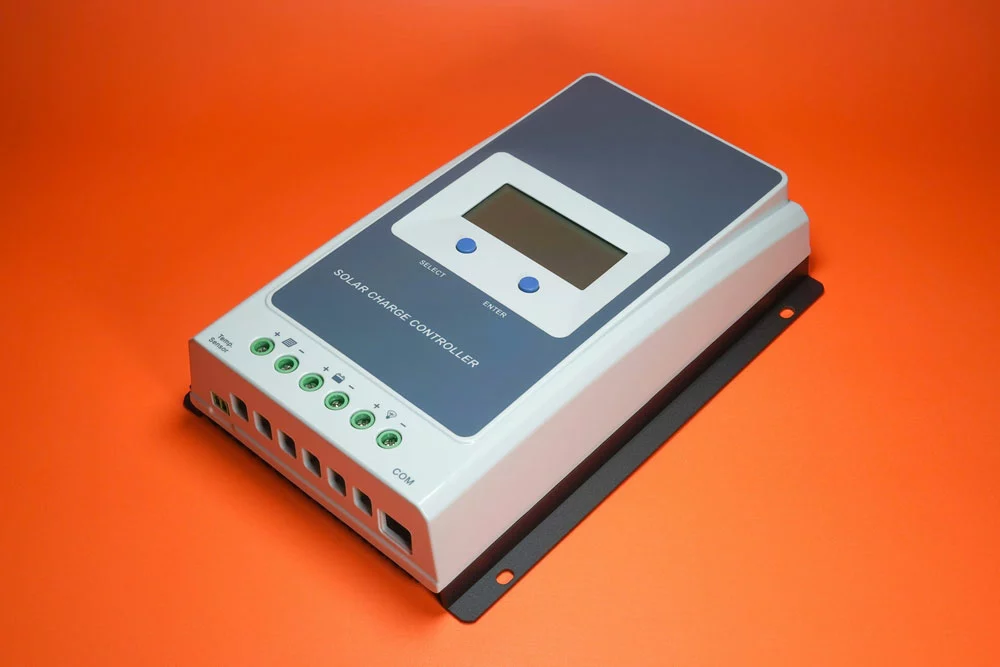
A solar charge controller
The sun’s radiation varies during different times of the day. Also, it increases when there is sunny weather than when there is bad weather. Therefore, the current and voltage output from the panels will vary.
An MPPT sweeps through the panel’s output voltage and identifies the optimal output current and voltage point to produce maximum power. This operation explains its name, Maximum Power Point Tracker.
The intelligent technology increases its operating efficiency by a significant margin, generating up to 30% more energy than a PWM charge controller.
Difference Between MPPT and PWM Solar Charge Controllers
PWM charge controllers utilize pulse width modulation (PWM) to create a rapid switch that controls battery charging. They provide a direct connection from the solar panel to the battery, and the transistor switch remains open until the battery attains the absorption charge voltage. Once it reaches this voltage, the transistor switch closes and opens rapidly to regulate the current and keep the battery voltage constant.

A solar kit setup concept
This system is inefficient because the solar panel’s voltage gets pulled down to match the battery’s voltage. In other words, it draws the panel charging voltage away from the optimum operating voltage, reducing its output power and running efficiency.
PWM controllers are ideal for low-budget 12V systems with two solar panels at most for lighting, USB charging, and light usage. However, they are not practical for large solar systems for powering entire homes or business premises.
How MPPT Charge Controllers Work
As stated earlier, MPPT controllers use maximum power point tracking to charge the battery as quickly as possible. This maximum power point is a point on the I-V (current-voltage) curve where the panel generates the highest solar power. Power is a product of current and voltage. So this point moves along the curve due to several factors, such as the following.
- Sunlight intensity conditions
- Panel temperature
- Solar panel tilt angle/ panel orientation
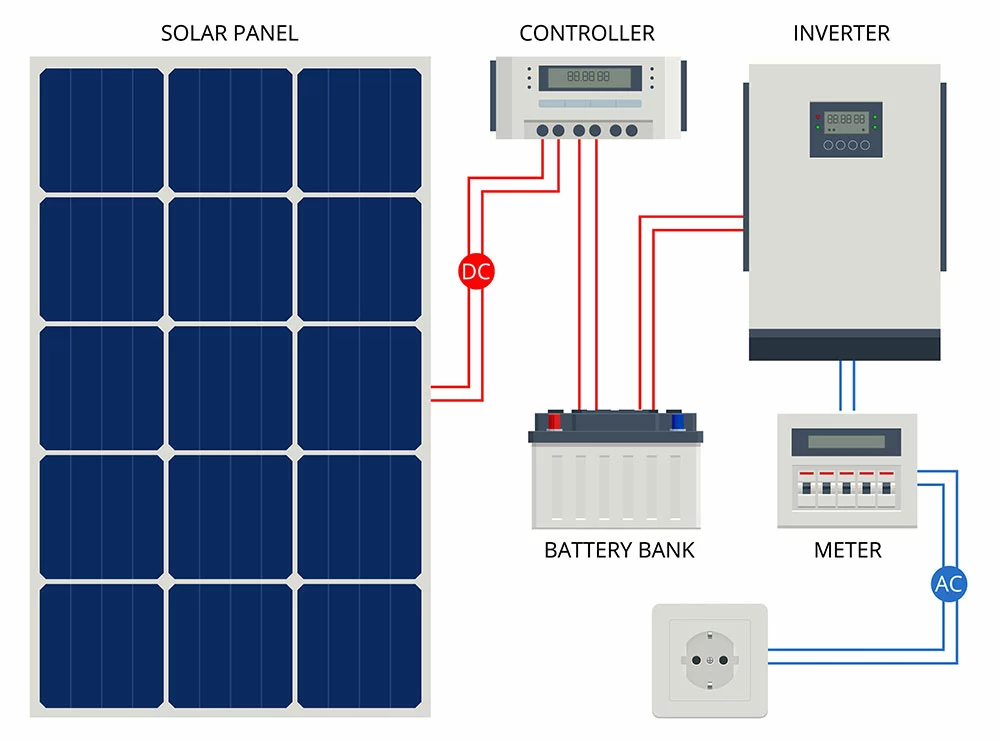
A solar panel system with an MPPT controller and a hybrid inverter
The MPPT controller usually checks the solar panel voltage output and compares it with the battery system voltage. It uses these numbers to determine the best power the panel can churn out to recharge the battery. The process involves converting the panel’s output voltage to the peak power voltage that drives maximum current into the battery bank.
Why?
It is the current (amps) that flows into the battery that matters. Modern MPPT controllers have a 93-97% efficiency, resulting in a power gain of 10-15% in summer and 20-45% in cold weather conditions.
Consider this scenario. If your 12V battery is low and the MPPT finds the solar voltage output is 17.6V at 7.4A. It will convert the voltage to 12V at 10.8A to charge the battery since this is the maximum power point. Although it reduces the voltage and increases the current to charge faster, the power output remains at about 130 watts.
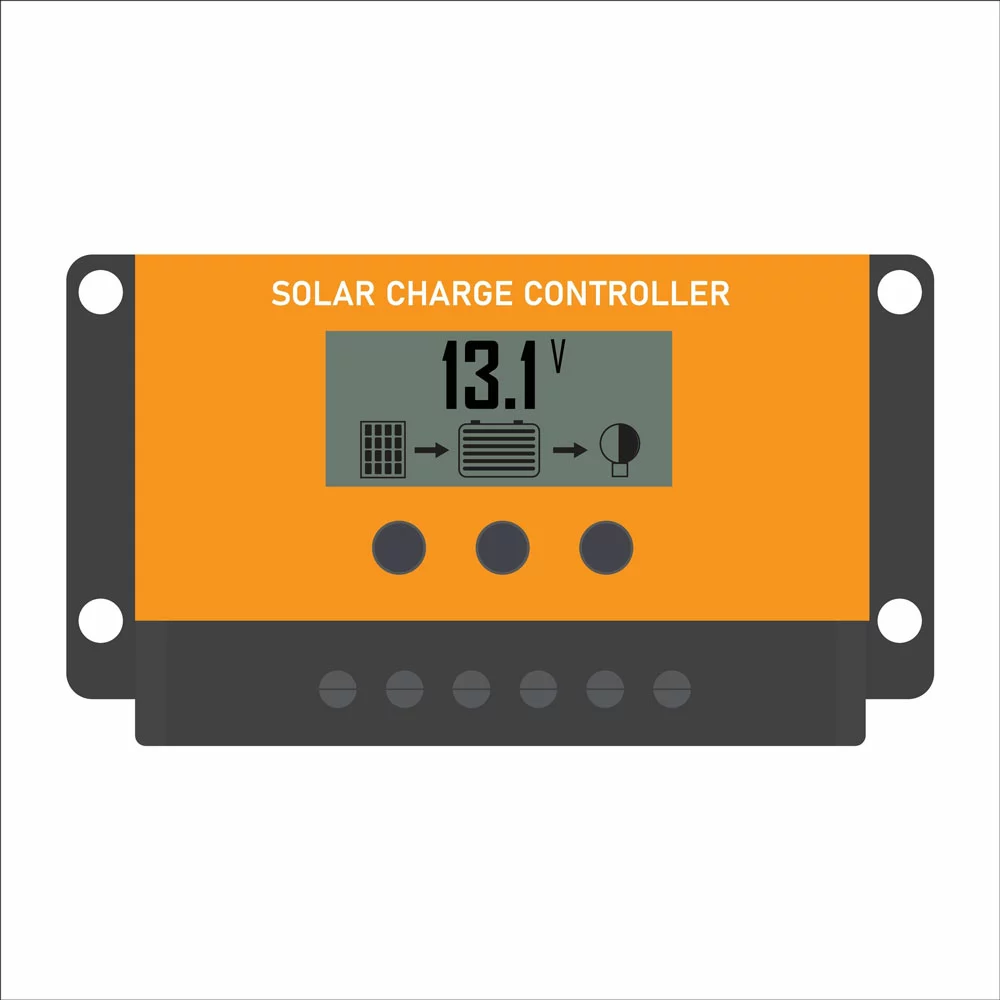
A solar charge controller
Benefits of MPPT Charge Controllers
Efficient at Using Power
An MPPT solar charge controller can increase efficiency by an average of 30% on a sizable solar power system. This efficiency is significantly higher when the panel max voltage exceeds the battery system voltage by a wide margin.
Ideal for Large Systems
Larger systems produce high-voltage power. An MPPT converts this additional power to a higher current at the battery charge voltage. So as your system grows, the maximum charge current will increase significantly. And you can charge more batteries faster.
Better for Cloudy Areas
The maximum power point tracking aspect is ideal for cloudy areas because it increases the charging efficiency as the solar output fluctuates.
Top 3 MPPT Solar Charge Controllers
Victron SmartSolar MPPT
The Victron MPPT controller is the most advanced solar controller because it features Bluetooth built-in for remote configuring, programming, and monitoring.
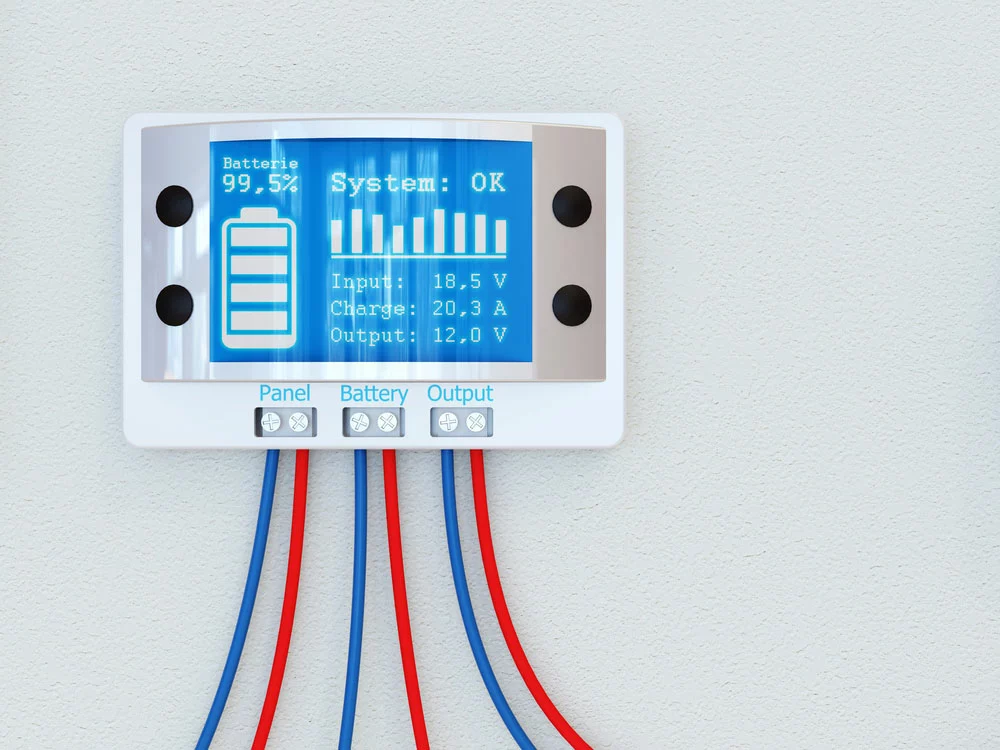
A solar charge controller with a large display
You can play around with these settings via the VitronConnect app, a fully-featured platform that shows various data such as the following.
- Panel voltage
- Float voltage
- Battery preset
- Low-temperature cut-off
Besides the app, this MPPT solar charge controller has a 100V, 30A rating and can recharge severely depleted batteries (as low as 0V).
EPever Triron Series
This MPPT solar charge controller does not feature wireless connectivity. But it makes up for it by having an onboard display that shows all the data and settings.
Also, the device features an RS485 interface for connecting to a laptop, phone, an MT50 remote meter, or an eBox-WiFi to monitor the wide range of settings remotely. And there are two 5V/2.2A USB ports for phone charging or powering a fan.
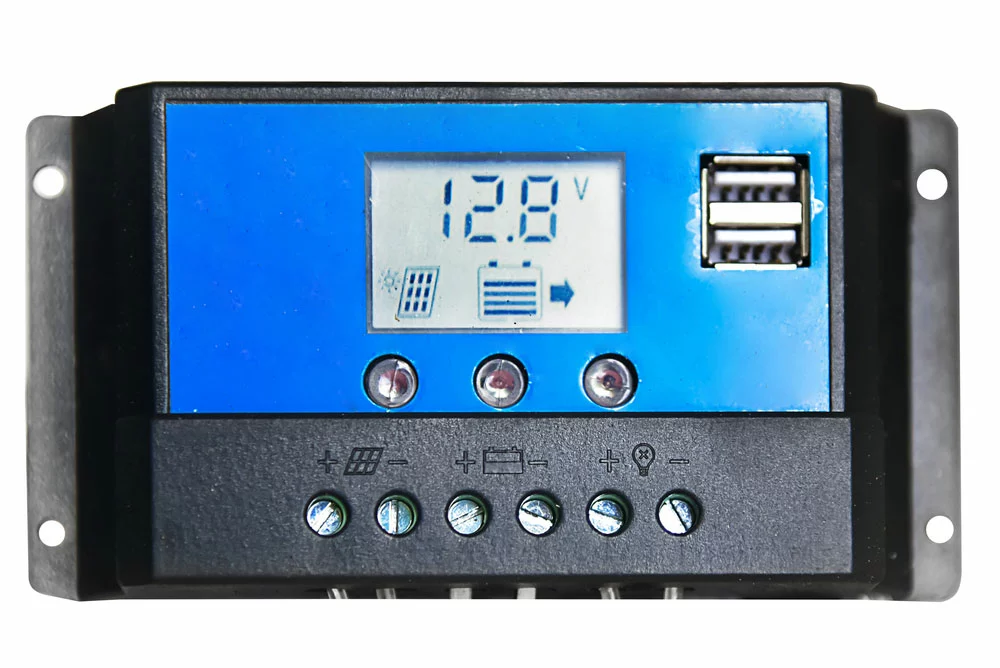
A solar charge controller with USB ports
The device features extensive electronic protection that lengthens your 9 to 32-volt battery’s lifespan.
Renogy Rover
Renogy’s MPPT solar charge controller is compatible with several deep cycle batteries, such as gel, sealed, lithium, and flooded. And it offers intelligent charge protection with the following features.
- Temperature compensation
- Overload protection
- Overcharging protection
- Over-discharging protection
- Short-circuiting protection
- Reverse current flow protection
- Reverse polarity protection
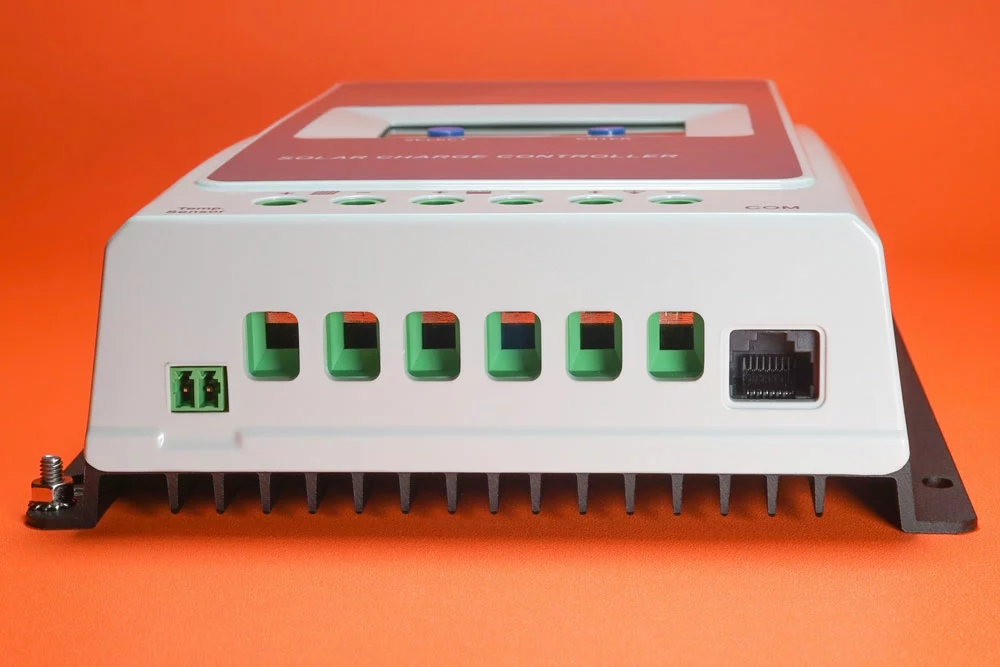
A solar charge controller with an RS485 interface
The system also features automatic 12V/24V battery voltage detection and a die-cast aluminum body to maximize heat dissipation. A built-in screen helps monitor the system on-site, while an RS232 port enables BT-1 Bluetooth module connectivity for smartphone app remote monitoring.
Factors to Consider when Choosing an MPPT Solar Charge Controller
Current Rating
The current rating is the maximum charge current the MPPT charge controller can achieve to charge the battery. It is given in amperes and means the following.
- Less than 30A: This MPPT charge controller can handle about 400 watts or less at 12V and 800 watts or less at 24V. Any excess power will damage the unit. It is ideal for lithium batteries with a battery capacity of 60Ah or higher and lead-acid batteries 100Ah or higher.
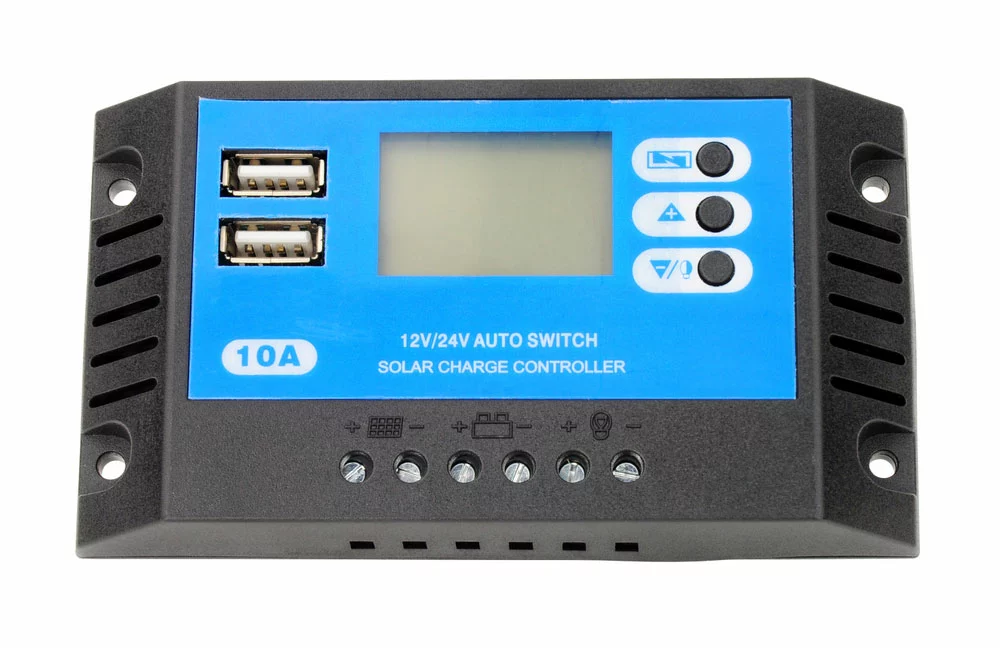
A 10A solar charge controller with 12V/24V auto switching
- 30-40A: Most MPPT charge controllers lie in this range. They can handle 400-500 solar power watts at 12V and 800-1000 watts at 24V. They are ideal to use with lithium batteries with a battery capacity of 80Ah or higher and lead-acid batteries 130Ah or higher.
- Greater than 40A: This MPPT charge controller is ideal for large off-grid solar power systems because it can handle 600+ watts at 12V and 1200 watts at 24V. Some might be compatible with 36V and 48V lithium and lead-acid batteries. These can manage even higher PV input power at these voltages.
Maximum PV Voltage
The solar charge controller size should match the panels in what is known as controller sizing. An MPPT solar charge controller’s max PV voltage should be higher than the max open-circuit voltage of the solar array. These input voltage limits imply the following.
- Less than 100V: This max voltage is rare to find. It means the controller can handle two to three 12V panels in series.
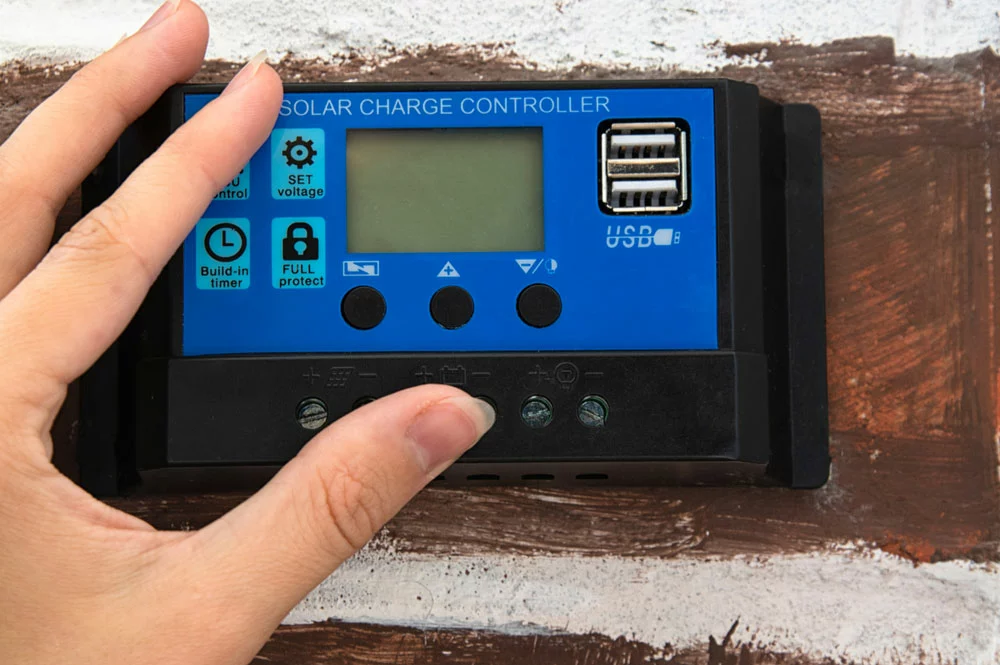
A solar charge controller
- 100-150V: This rating implies the solar controller can manage three to six 12V panels in series.
- Greater than 150V: These units can handle seven or more 12V panels in series and are ideal for large off-grid power systems.
Nominal Battery Voltage
This factor shows the solar controller’s compatible battery voltage. For instance, 12V/24V auto means the controller can detect 12V and 24V battery banks automatically. Others might sense 36V and 48V batteries.
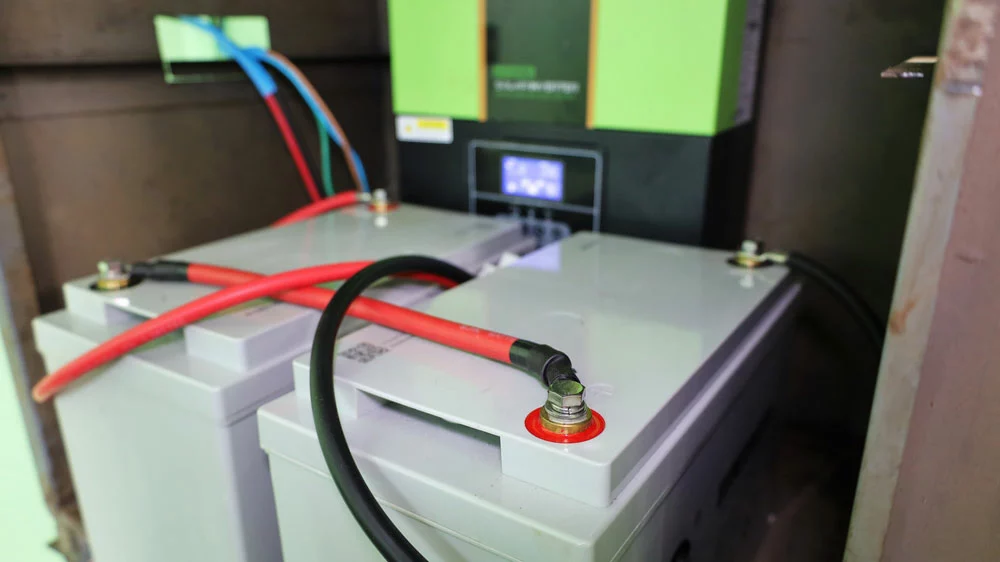
Solar batteries
Compatible Battery Types
The most typical comparison is between lead-acid and lithium batteries. Most are 12-volt batteries, and the lead-acid type has two variations.
- Flooded 12V lead-acid battery
- VRLA/Sealed (Gel and AGM 12V lead-acid batteries)
A controller with lithium battery compatibility means it has a preset charging profile for that battery’s chemistry. Most controllers have battery presets or custom charging profiles with adjustable voltage setpoints to suit different battery types.
Maximum PV Input Power
The max PV input power refers to the highest solar array wattage the controller can handle. Each solar controller has varying PV input power ratings for different voltages.
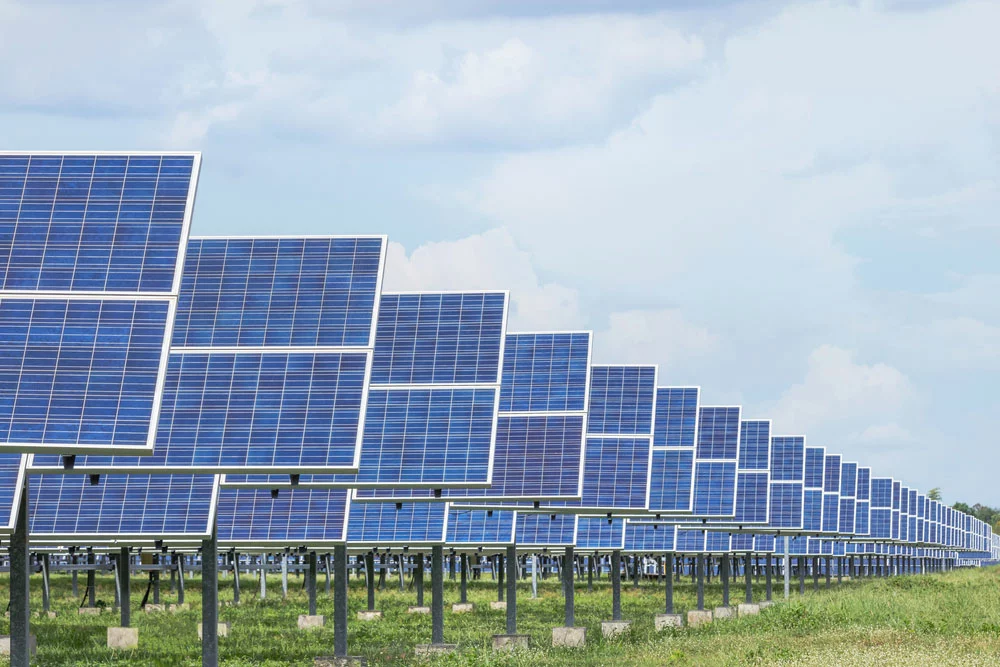
An array of solar panels
Wireless Monitoring
Some units have built-in Bluetooth, while others require an additional Bluetooth adapter, such as the BT-1 Bluetooth module, to enable wireless monitoring. Cheap MPPT solar charge controllers don’t have Bluetooth monitoring capability, so you can only monitor them via their onboard display or LED lights.
Wrap Up
In conclusion, MPPT charge controllers are essential for large off-grid power systems due to their high efficiency. But they are not the best for small setups containing one or two solar panels. That’s it for this article! If you have any questions, drop a comment, and we’ll get back to you shortly.
